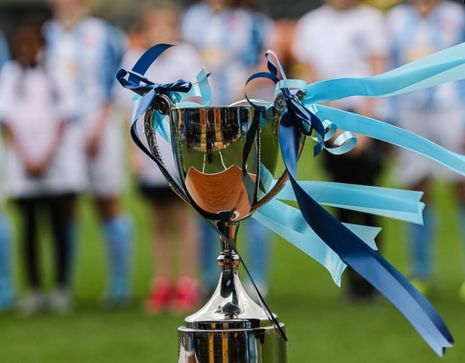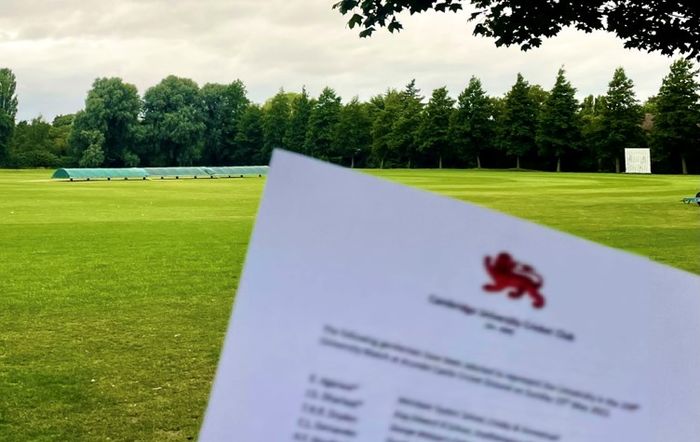What’s so appealing about the Cambridge Blue?
Ahead of a new season of sport, Alex Berry explores the complexities of Cambridge’s most prestigious sporting achievement

There are many traditional aspects to the Cambridge sporting system, one of the most well-known being the awarding of the prestigious Blue. Even when I first arrived in Cambridge, deciding which sport it would be easiest to get a “Blue” in seemed like a common topic of conversation. But what actually is a “Blue”? And why is it so highly valued?
What is a “Blue”?
A Blue is the highest honour that can be earned by a Cambridge athlete, most often through participating in a Varsity match or race against the University of Oxford. The full Blue is the most prestigious award, but athletes can also be awarded the half-Blue or second team colours for other levels of achievement. This long-standing tradition was first established in the 1860s, when the Cambridge Blue was established as both the recognisable colour for the kits of Cambridge’s top sports teams and an achievement for athletes. It was initially just men’s rowing, cricket and athletics that could receive the offer, but this has progressed over time to include a much wider range of sports, as well as women’s teams. The current awarding process is conducted by independent men’s and women’s Blues committees.
Which sports are “full Blues”?
The categories that the sports are grouped into to determine which sporting colours players are awarded can get quite confusing: some sports automatically award full Blues when you compete in a Varsity match, others switch between half-Blues and full Blues on a discretionary basis for an equivalent event. All the usual suspects are listed as full Blues on the Hawks’ website: association football, cricket, lawn tennis, rowing and rugby union. Boxing and golf also make the list alongside field hockey and squash, which are maybe more surprising when compared to others.
Despite being a very popular sport at the university level with strong numbers in both University and college teams, netball is not listed on the Hawks’ website. The women’s team, however, can still gain full Blue status by playing in the Varsity match. It’s also worth noting that some of the sports listed on the Hawks’ website as full Blues are not necessarily placed in the same category for the women’s teams.
Which sports don’t have full Blue status?
Interestingly, despite being one of the first sports to be given the Blue status, athletics does not award a full Blue to all athletes who compete in the Varsity match, with some only being eligible for a half-Blue. Rugby league also does not, and is listed as full Blue/half-Blue compared to the full Blue of rugby union.
You can earn a discretionary full Blue in a wide range of sports, including cycling, para-athletics, rifle shooting and even real tennis, something that I had to Google to realise that it wasn’t just what you see at Wimbledon. Sports where only a half-Blue can be achieved include handball and lacrosse, as well as the highly physically demanding chess.
Why are different sports awarded different colours?
At first glance, the categorisation of some sports seems almost random, whereas others might make more sense. For example, in individual sports like athletics, it’s unsurprising that full Blues are more discretionary than in some traditional team sports. After all, athletes are competing individually in completely different events and potentially at completely different skill levels, whereas with team sports all the players will play in the same Varsity match.
However, there are also plenty of examples of this categorisation that I struggle to see the rationale behind. I’m tempted to label the difference between the colours awarded in rugby union and rugby league as another unfortunate reminder of the classism still evident in many aspects of Cambridge’s sporting system. Given just how similar they are, it would be hard to justify giving out different awards. The relegation to half-Blue can’t be prompted by having 13 instead of 15 players on a team. It seems more likely to be because of the areas that those 13 come from.
I’m sure it could be argued that the discrepancy is due to how the respective teams perform in comparison to other university teams, as the Hawks’ website does cite achieving success at national versus county and regional levels as the reason that full Blues and half-Blues are awarded. But surely this differs (at least to some degree) year on year? And if it does differ between seasons, why even bother splitting the sports into such defined categories? Some years the top sports teams must be more deserving of achieving this highest honour than others; winning Varsity versus an embarrassing defeat to Oxford surely do not warrant the same level of achievement, as is currently given.
Thankfully, I’m not someone who has to attempt the near impossible task of trying to standardise this awarding system across a range of such vastly different sports, but I still think some clearer and more available rationale on why different sports are awarded different colours wouldn’t hurt.
It can’t be denied that reaching the top sports teams in Cambridge is an outstanding achievement, but surely this alone is enough without an overly complicated tradition aiming to determine in which sports this achievement is most impressive. Still, it’s not a tradition I see going anywhere anytime soon, so feel free to keep poring over that list, trying to work out which is the easiest sport to take up to get that Blue.
 News / Cambridge academics stand out in King’s 2026 Honours List2 January 2026
News / Cambridge academics stand out in King’s 2026 Honours List2 January 2026 Interviews / You don’t need to peak at Cambridge, says Robin Harding31 December 2025
Interviews / You don’t need to peak at Cambridge, says Robin Harding31 December 2025 Comment / What happened to men at Cambridge?31 December 2025
Comment / What happened to men at Cambridge?31 December 2025 News / Varsity’s biggest stories of 202531 December 2025
News / Varsity’s biggest stories of 202531 December 2025 News / Unions protest handling of redundancies at Epidemiology Unit30 December 2025
News / Unions protest handling of redundancies at Epidemiology Unit30 December 2025










